Grape variety Moldova
Moldova is an old, very famous and widespread table variety of Moldovan selection. It was created at the Research Institute of Viticulture and Winemaking of the Republic of Moldova back in the 70s of the last century, but still enjoys well-deserved popularity among table grape producers and buyers. It can rightfully be called one of the visiting cards of Moldovan breeding science, because, in addition to being recognized at home, it is widespread in many viticultural regions of the former Soviet Union. In Russia, Moldova is officially included in the State Register of Breeding Achievements in the North Caucasus Region (Republic of Dagestan, Kabardino-Balkar Republic, Krasnodar Territory and Republic of Adygea, Rostov Region, Stavropol Territory and the Republic of Karachay-Cherkessia, Crimea) and Nizhnevolzhsky (Volgograd, Astrakhan, Saratov region, Republic of Kalmykia). The variety is valued for its high productivity, beautiful large clusters, transportability of the crop and suitability for long-term storage throughout the winter.
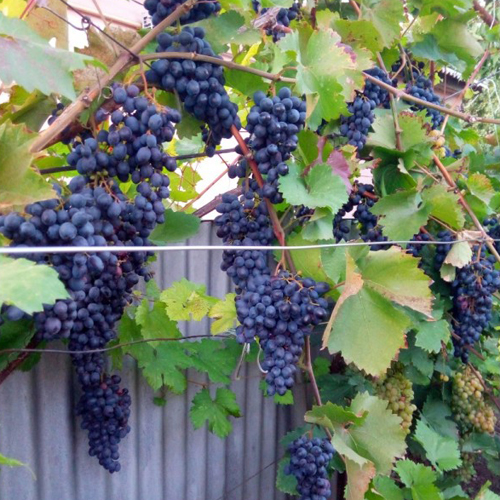
Moldova was bred by crossing the Guzal Kara variety with the complex interspecific hybrid Saiv Villar 12−375. Zoned in 1980. Our heroine turned out to be so successful that, in turn, she herself was used in breeding work to breed such varieties as Nadezhda AZOS, Kuban, Kodryanka, Zarevo and some others.
Vigorous grape bushes. The leaves are large, five-lobed, slightly dissected, dark green (red-violet in autumn), with upward curving edges, with a weak cobweb and bristly pubescence underneath. The upper notches are small, open, barely marked or lyre-shaped, the lower ones are absent or barely marked. The petiole notch is open, lyre-shaped, with a pointed bottom. The denticles on the edges of the lobes are large, triangular with a wide base, along the edge - large, narrow-triangular, multidirectional. Flowers in Moldova are bisexual.
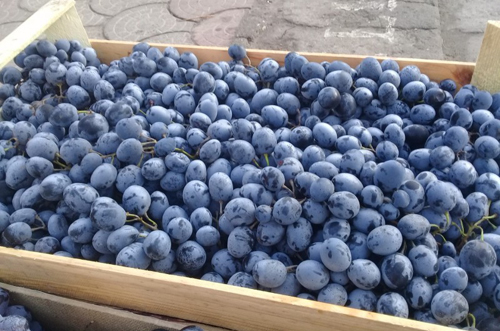
The bunches of the variety are large, cylindrical, conical or winged, of medium density or loose, with an average weight of 400-600 grams and above. The stem of the bunch is strong, of medium length, green. The berry is large, 25 × 19 mm in size and weighing 6-7 grams, oval, dark purple with a thick prune bloom. There are 2-3 seeds in a berry, less often 4. The peel is strong, dense. The pulp is fleshy, crispy, has a pronounced pleasant cartilage. The taste is harmonious, neutral, sweet and sour. During storage, the acidity in the berry decreases significantly, which has a positive effect on the overall tasting assessment of the grapes. Having kept the clusters until spring (and in the case of Moldova, this is a quite feasible task), there is no doubt that they will become sweet, like honey.
The harvest of this variety is used for fresh consumption and long-term storage (in refrigerated chambers until March-April). It is also possible to prepare delicious rich compotes and even jam from it. Long-term storage coupled with very good transportability makes these grapes very valuable for commercial cultivation. Indeed, in the winter months Moldova not only significantly improves its taste characteristics, but also greatly increases in price, seriously increasing the profitability of its cultivation.
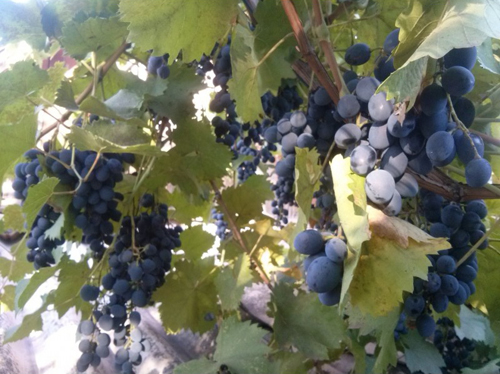
The variety is one of the late-ripening varieties, which significantly limits the possibilities of its distribution exclusively to the southern regions. Indeed, in the more northern regions, it may simply not have time to ripen. The duration of the growing season of grapes from budding to full ripeness of berries (late September - early October) is 155-160 days with the sum of active temperatures of 2900-3000 ° C. The ripening of the shoots is good - 90%. The percentage of fruitful shoots is 65-70%. The number of bunches per developed shoot is 0.8-0.9, per fruitful one - 1.7. The yield is consistently high - 120-150 kg / ha.Well-developed bushes with a high level of agricultural technology and favorable weather conditions on powerful arched formations are capable of producing truly gigantic yields - up to 150 kilograms of beautiful juicy bunches of excellent quality. This, by the way, is another feature of Moldova - it feels much better on horizontal arched and arbor supports than on a vertical trellis. At the same time, the bunches acquire a much better presentation, and during the collection, the layer of wax coating is less damaged, which protects the berries from decay during storage. The sugar content of grape juice is 17-19 grams per cubic centimeter, while the acidity at the time of ripening is 8.0-8.5 g / l.

The agrotechnical properties of Moldova are quite worthy. In addition to the good yield of the harvest, one can note its increased resistance to major diseases. The only thing that needs to be paid attention to is control over the development of phomopsis, to which the variety is very sensitive, as well as possible manifestations of calcareous chlorosis. Against other diseases, one or two preventive treatments before and after flowering will be enough. Cracking of berries is usually not observed, however, a sharp change in a prolonged drought with rainy weather can cause some trouble. Wasps rarely damage grapes, due to the late ripening period. Those who can annoy them are birds: with the onset of cold weather, a sweet berry attracts the attention of starlings and other birds. The frost resistance of the vine is moderate - up to -22 ° С. The plant has an increased resistance to phylloxera, which makes it possible to grow it in its own rooted culture, even in the zones of infection by this root pest. However, for planting, it is still worth choosing sandy and sandy loam soils, where phylloxera is not so harmful.
Due to its high vigor of growth, the variety quickly enters the fruiting phase. Already in the third year, the bushes give their first harvest, which grows every year as long-term wood accumulates. The grapes have a high regenerative capacity, quickly recovering from winter frost damage. The strength of growth must be taken into account when planting. Moldova does not accept thickening, growing in this case into a vine and sharply reducing its yield. The feeding area of the bushes should be at least 4-5 square meters. When growing on a trellis, it is better to choose long-sleeved formations with free placement of growth without shelter for the winter. In frost-hazardous places, semi-covering and covering forms are preferable. It is possible to load adult bushes significantly, leaving up to 60-70 eyes. Fruit arrows are cut into 4-6 buds. On fan-shaped forms, fruit vines can be longer while maintaining the optimal load on the bush.
Although grapes in warm autumn can hang on the bushes for a long time without damage, they still need to be harvested on time. In overripe bunches, transportability and suitability for long-term storage are significantly impaired. Therefore, in order to be able to enjoy the honey-sweet berry of Moldova on New Year's Eve, it is necessary not to miss the optimal harvest time. Bunches of this variety can be stored both by hanging them on a wire or slats, and in boxes, laying them on a bed of straw strictly in one row with the combs up. Optimal storage conditions for grapes: dry, cool, well-ventilated room with low humidity levels and temperatures from 0 to 5 ° C.
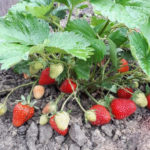

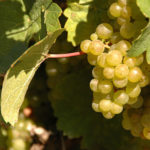
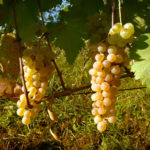
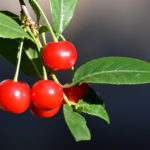
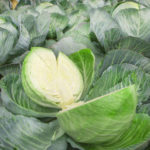



I treat Moldova grapes with respect. Persistent and hardy. We do not cover the bushes, they easily tolerate 20-degree frosts and recover. For the Krasnodar Territory, severe frosts are rare. The hotter the summer, the sweeter the berry. In dry years, watering is mandatory once a week. Pruning bushes in early spring, until the grapes "cry" (sap flow). It ripens in mid-September. To prevent the wasp from hitting the berries, we hang containers with water on the trellis next to it. Throughout the summer, we cut off young shoots without regretting, the breeze walks between the vine and the bunches. No thickened bushes - no diseases and the berry is larger. We cut the grapes at the end of October. From 5 bushes we get more than 200 liters of pure grape juice, we make wine. We leave a few bunches on the vine until frost.
Or you can cut a couple of grones right with the vine (longer, so that the supply of nutrients lasts longer) and hang it in the basement. If there is no excessive dampness, Moldova can feast on it until December.
Among the eldest varieties, Moldova is held in high esteem on our site not so much because of the late and tasty berries (the skin, however, is thick), but because of the opportunity to make an excellent wine out of it. We try not to overload the bushes, because after a very “hard” year, the bushes may freeze, and as a result, you can be left without a crop at all. Treatments for mildew and mildew are minimal - a maximum of two per season. We do not cover Moldova thoroughly for the winter, we only remove the vine from the gazebo and bend it to the ground.
I have been familiar with this grape for over 20 years, since the beginning of the 90s. Now I have 3 bushes from Moldova, planted in 2007 to decorate the gazebo. In the spring we remove a little ovary (usually no more than 10 - 15%), otherwise there is a risk that the vine and bunches will not ripen. The most common problems are tick attacks and powdery mildew disease. Enough preventive spraying 2 - 3 times per season. Regularly high yields. We leave small bunches on the bushes almost until frost. We eat delicious berries fresh, we make wine. We don't even lower the vine to the ground for the winter. I froze a couple of times, when after the February thaw it got colder, but quickly recovered.